There are basically two types of mozzarella cheese. Mozzarella di Bufala (buffalo mozzarella) is made from domesticated water buffalo milk and mozzarella fior di latte is made from fresh pasteurized or unpasteurized cow’s milk. Buffalo mozzarella is made from milk of water buffalo raised in designated areas and holds the official status of protected designation of origin (PDO) under the European Union. I did not know any of that until I attended a class on making mozzarella at Zingerman’s Creamery. I learned a lot that day.

Amy and Chris Gaulle heat the curds with 180˚ water.
In the USA, mozzarella is produced as two types, low moisture (moisture content of less than 50%) and high moisture (more than 52%). The low moisture mozzarella is developed to handle distribution and transportation for stores and is usually produced in large factories. If you haven’t had fresh, made-that-day mozzarella, you are in for a treat. It’s creamy and moist and has more flavor than I have ever had in any store brand mozzarella. In my opinion, the low moisture mozzarella should be called something else because there really is no comparison.
There are two basic ways to make mozzarella: direct acidification of the milk to form the curds or the rennet method. In both methods, raw milk is pasteurized and then coagulated to form curds. Once the curds reach a pH of 5.2, they are cut into small pieces, mixed with hot water, and then “strung” or “spun” until long ropes of cheese form. This “stringing of the curd” is unique to cheeses in the pasta filata family such as mozzarella, scamorza and provolone. When the proper smooth, elastic consistency is reached, the curds are formed by machine or hand into balls which are then tossed into cold salted water so that they maintain their shapes while they cool.
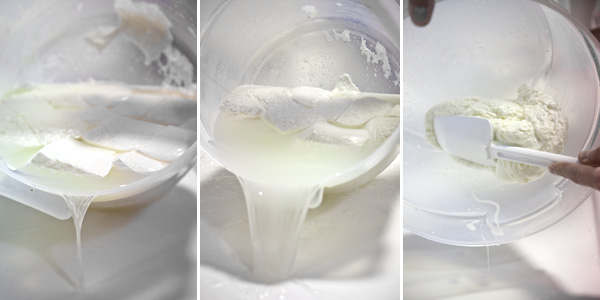
The curds will reduce in size after each time hot water is added to the curds and then drained.
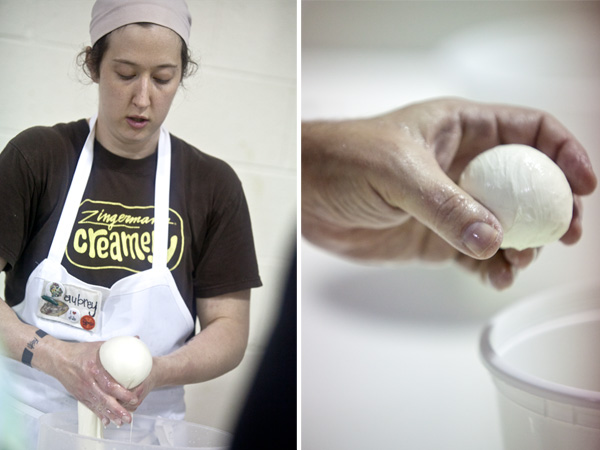
(Left) Cheesemaker Aubrey Thomason makes a mozzarela ball from curds. (Right) After forming the mozzarella ball it gets placed into brine to cool.
Note to vegetarians: Not all mozzarella cheese is vegetarian. It depends on the type of rennet used in the producton. Calf rennet is extracted from the inner mucosa of the fourth stomach chamber (the abomasum) of young, unweaned calves. These stomachs are a by-product of veal production. Vegetable rennet is made from enzymes from plants that have coagulating properties such as nettles and thistle. Places such as Zingerman’s Creamery list right on their website whether the cheese is made with vegetarian or animal rennet.
The mozzarella-making class at Zingerman’s lasts about 2 1/2 – 3 hours and I recommend that you wear light clothing as it gets very warm and steamy in the room while cheese is being made. Because it gets so humid during the process of making the cheese, the class will not be offered after May, but will resume in the fall. Plan on taking home a lot of cheese and if possible plan to eat a bunch of it fresh that night. It may be a good time to have a few friends over. If nothing else, you will enjoy Aubrey’s sense of humor and endless knowledge of cheese and cheese-making. What could be a very nerve-wracking process is made relaxing and fun by Aubrey. I gained a lot of respect for cheese-makers that day. It’s a profession that requires a lot of specific knowledge and experience. Like baking bread, cheesemaking is more of an art than science. Through practice, one can learn by sight and touch how to make the perfect cheese. You will understand this when you look for a mozzarella cheese-making recipe online and see that every site says something different. It’s more about the process than anything else and I HIGHLY recommend taking a class to learn some of the finer points that cannot be learned through a book or on a website.
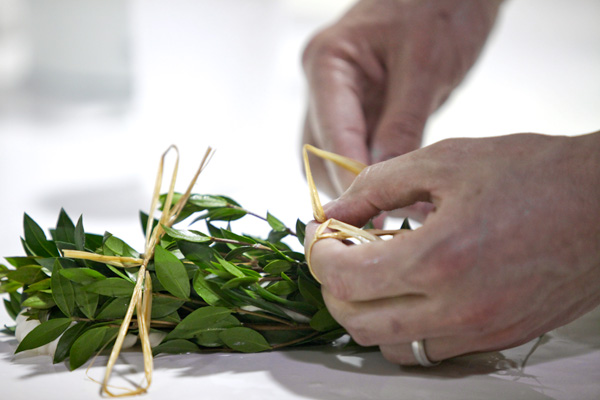
Mozzarella in myrtle.
The mozzarella-making class at Zingerman’s Creamery consists of:
- Learn how to make fresh mozzarella from milk.
- Learn how to make mozzarella from curd.
- Make a mozzarella and myrtle — braided mozzarella wrapped in myrtle leaves which is designed to be cooked.
- Make a burrata, a fresh Italian cheese, made from mozzarella and cream.
The class is every Saturday at the Creamery (excluding summer months)
$50/person, registration required. Call: (734) 929-0500 to reserve your spot
Click HERE to download a 20% coupon for the class!
Don’t want to take the class and have no interest in making your own mozzarella, but want to try it? You can always get fresh mozzarella at the creamery and every Monday they have fresh mozzarella at $2 off the price per pound.
What did I do with the mozzarella I brought home that day? Well, first, I ate a bunch of it fresh and, then, the next day, I made toasted ravioli with a fresh mozzarella, spinach and walnut filling. Recipe to follow.
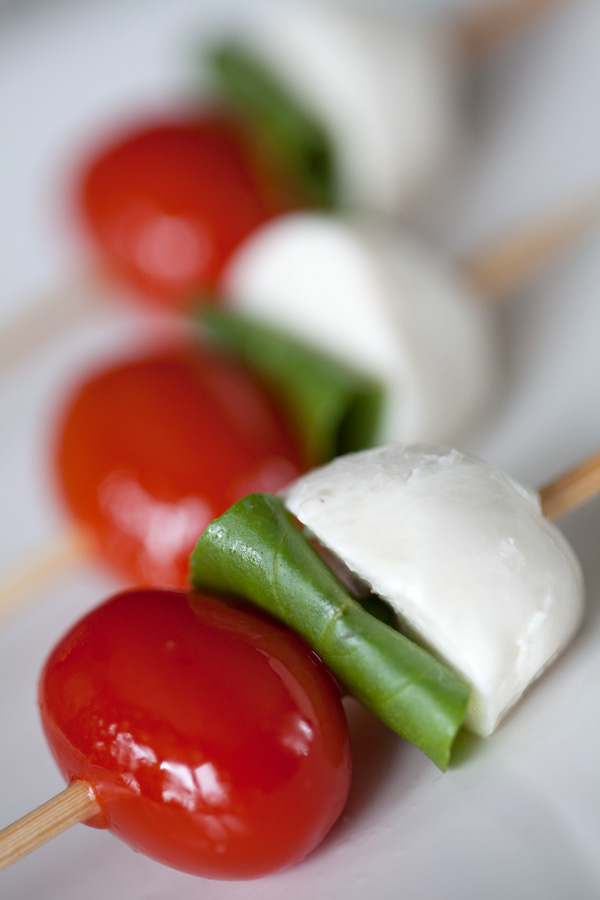
Insalata Caprese, a salad (literally translated, salad in the style of Capri).

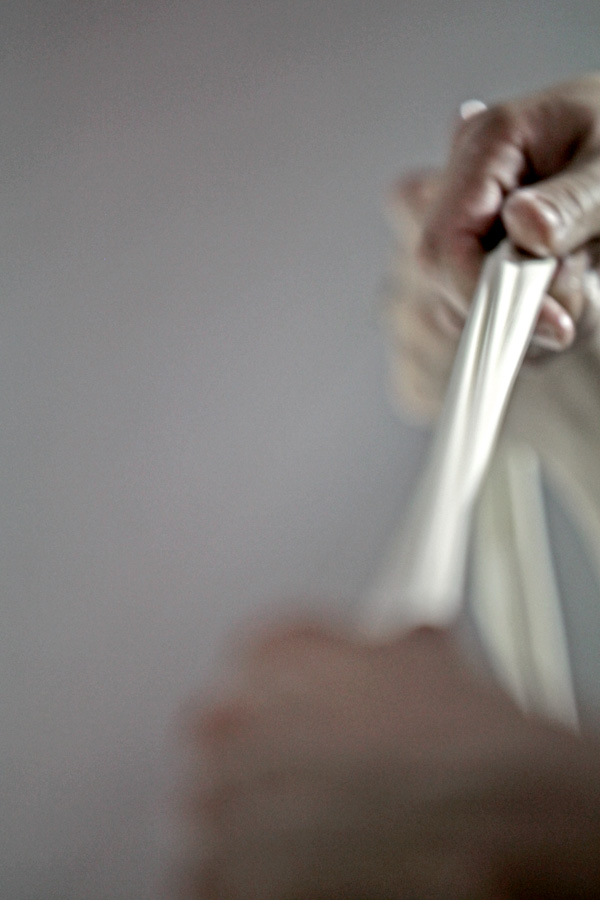
Anne, I will definitely take this course when I find my passport. It’s only a 5 hr. drive from Toronto! Loved your article: very informative and it introduced me to Zingerman’s. Off to read your other posts now. Cheers!